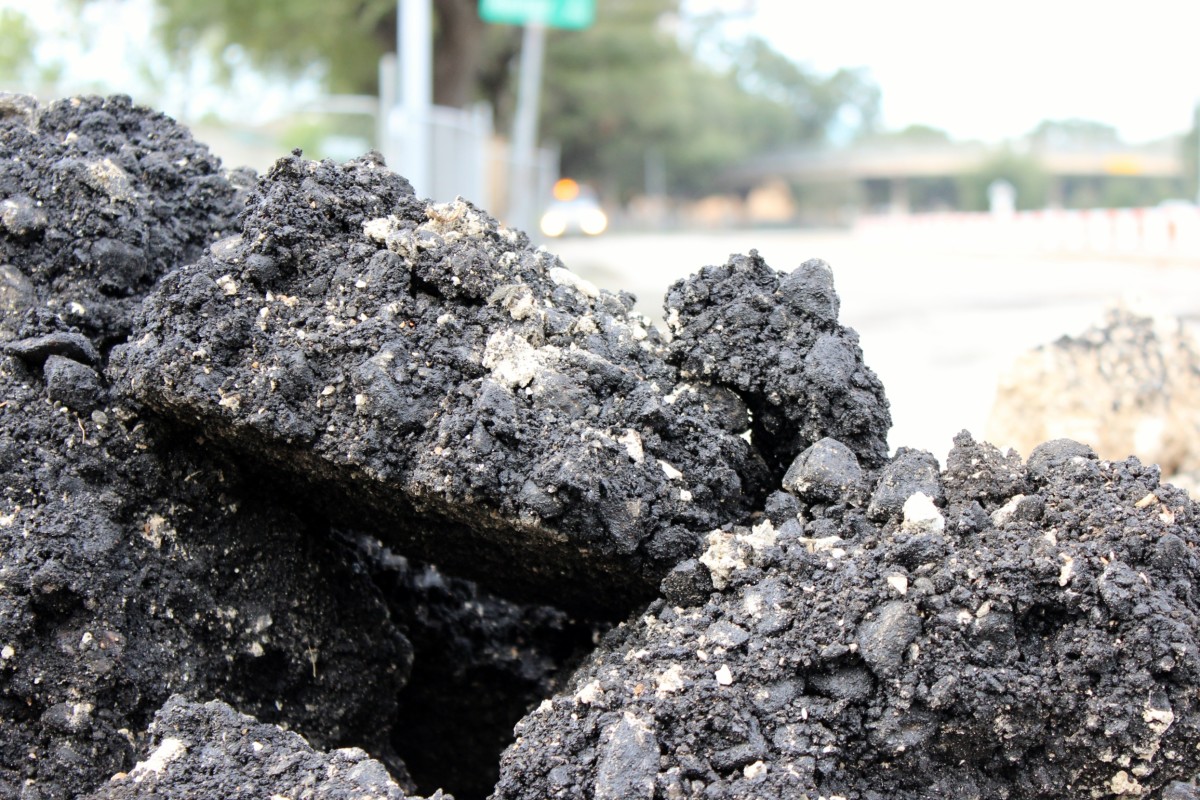Dave Fehling/Houston Public Media
Demolished asphalt pavement from Houston’s Allen Parkway.
A new study from researchers at Texas A&M University found that abandoned buildings and vacant lots are creating dangerous surface temperatures in Houston, already one of the 10 hottest cities in the United States.
Texas A&M lecturer Dingding Ren and his team used thermal imaging equipment mounted on drones to map the surface temperatures in seven sites across the city.
They collected more than 1,400 drone images and combined them with NASA satellite LandSat data to assess the heat risk across residential, commercial and industrial zones.
“The research found that vegetated or vacant land lowers land surface temperature, while abandoned structures raise it due to the heat-retaining surfaces,” Ren said.
RELATED: Houston summers are getting hotter and more extreme, data shows
Concrete, asphalt and gravel absorb heat during the day and release it overnight, while lots with vegetation cool the surrounding area significantly, according to the study. The surface temperatures can be as much as 20 degrees Fahrenheit cooler compared to abandoned buildings and paved lots, Ren and his team found.
Using publicly available demographic data, they also found that higher surface temperatures were associated with higher social vulnerability, meaning communities that are hotter are at increased risk during natural disasters.
RELATED: Some Houston neighborhoods could be up to 14 degrees hotter than others, study finds
“The finding highlights the need for targeted cooling strategies,” Ren said, “especially passive cooling mechanisms, like great infrastructure and land reuse, to reduce the heat risk and promote climate resilience in disadvantaged communities.”
According to the study, Houston contains roughly 45,000 acres of vacant land and 10,000 acres of abandoned buildings, but Ren sees potential for improvements to green infrastructure in these areas. Passive cooling mechanisms are design strategies that either remove heat or prevent heat from entering a building or specific location.
“The vacant and abandoned land,” Ren said, “we consider that as a missed opportunity because there are a lot of passive cooling systems [that] can help to reduce the local microclimate.”


